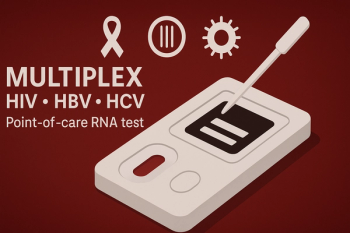A case series published in Communications Medicine explored the effects of extended courses of oral nirmatrelvir/ritonavir (Paxlovid) for individuals with Long COVID. The study involved 13 patients who took extended courses ranging from 7.5 to 30 days. Of these, 11 participants were not experiencing an acute reinfection, while 2 were undergoing treatment during an acute SARS-CoV-2 reinfection. The results indicated that while some patients experienced symptom reduction, others saw little to no benefit.1
Among those who took Paxlovid outside of an acute infection context, some reported symptom improvement, though these benefits did not always persist. One participant discontinued treatment due to severe stomach pain. In contrast, the two individuals who used Paxlovid during a reinfection both returned to their baseline health after completing the treatment.1
The findings suggest that extended Paxlovid courses may benefit some Long COVID patients, but results are inconsistent. Researchers emphasize the need for further investigation into why Paxlovid works for some individuals and whether specific treatment durations are more effective. This research aims to guide clinical recommendations for using Paxlovid in treating Long COVID.1
In an exclusive email interview with Contagion, Alison K Cohen, PhD, MPH, assistant professor of epidemiology and biostatistics at the University of California, San Francisco, discussed the study’s findings. As a co-author of the study, Cohen shared insights into the study’s origins, the variability in patient responses, and the next steps for research.
What Led to the Investigation of Extended Paxlovid Courses for Long COVID?
Cohen shares what led to the decision to investigate extended Paxlovid courses for Long COVID, “We are about five years into the COVID-19 pandemic and the emergence of Long COVID. Millions of individuals across the world (including at least 5% of all American adults) are living with Long COVID. Yet, to date, no FDA-approved treatments exist specifically for Long COVID. People with Long COVID are eager for treatments that can help, but given the slow pace of research trialing different potential treatments, some patients are trying different medications themselves."
She further described how the 13 participants were identified for the case series,“The 13 participants in the case series are all people who had shared their individual experience either directly to one of the co-authors or who had initially described some of their experience in a public setting, and a co-author then followed up with them to learn more.”
Safety Considerations for Extended Paxlovid Use
Safety remains a key consideration when introducing new treatments. Cohen directed attention to a detailed safety analysis conducted in a separate study published in JAMA in June 2024. In that study, a 15-day course of Paxlovid was found to be safe for treating Long COVID, though it did not significantly improve symptoms. The STOP-PASC trial involved 155 mostly vaccinated patients with long-term COVID symptoms. Participants were randomly assigned to either Paxlovid or a placebo for 15 days.2
While the treatment was found to be generally safe, with only minor adverse events, it did not significantly improve key PASC symptoms like fatigue, brain fog, and body aches compared to a placebo. Serious adverse events were rare, with three reported in the Paxlovid group (blood loss anemia, forearm fracture, and melanoma), but these were unrelated to the treatment. Both the Paxlovid and placebo groups showed mild symptom improvement over time, but Paxlovid did not offer notable therapeutic benefits. The study suggests Paxlovid can be safely used for extended periods, particularly for immunocompromised patients, but further research may help identify specific patient subgroups who could benefit more from the treatment.2
To continue, Cohen acknowledged the need for further research regarding the variability in patient responses to extended Paxlovid courses, "We don’t yet know what might contribute to the variability in response to an extended course of nirmatrelvir/ritonavir in Long COVID patients. More research will be needed to identify who might be most likely to benefit."
What You Need To Know
A case series of 13 patients shows that extended courses of Paxlovid (7.5-30 days) may reduce symptoms for some Long COVID patients, but results differ.
Two participants treated during a reinfection returned to their baseline health after treatment, while others reported symptom changes.
Researchers call for more studies to understand why Paxlovid works for some patients and the optimal treatment duration.
Recommendations for Clinicians and Next Steps for Research
For clinicians, Cohen explained that the findings from this case series suggest that extended courses of Paxlovid may be a helpful tool for some, but not all, patients, "We found that some patients with Long COVID reported meaningful symptom improvement after taking an extended course of nirmatrelvir/ritonavir, while others did not. This may be a useful tool for clinicians treating patients with Long COVID, but it will also be important to do more research to identify who benefits and why."
While extended Paxlovid courses may offer symptom relief for some patients, the need for more research to determine optimal treatment protocols is critical. Identifying the patients most likely to benefit and understanding the most effective treatment duration are important areas for future study. This case series is a step toward understanding the potential role of antiviral treatments like Paxlovid in Long COVID management, but further evidence is needed to refine clinical recommendations.
References
1. Cohen, A.K., Jaudon, T.W., Schurman, E.M. et al. Impact of extended-course oral nirmatrelvir/ritonavir in established Long COVID: a case series. Commun Med 4, 261 (2024). https://doi.org/10.1038/s43856-024-00668-8
2. Geng LN, Bonilla H, Hedlin H, et al. Nirmatrelvir-ritonavir and symptoms in adults with postacute sequelae of SARS-CoV-2 infection: The STOP-PASC randomized clinical trial. JAMA Intern Med. Published online June 7, 2024. doi:10.1001/jamainternmed.2024.2007
















































































































































































































































































































